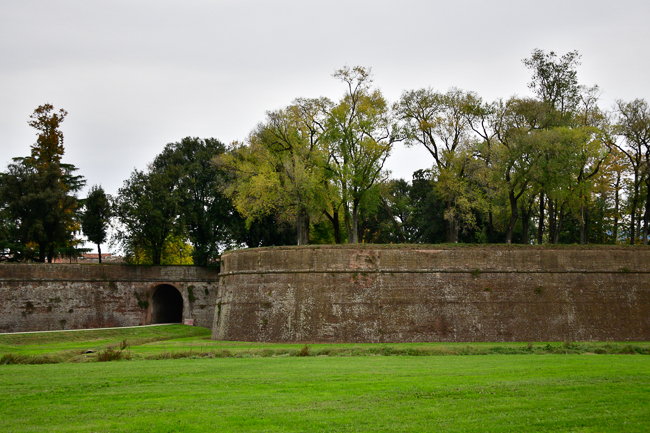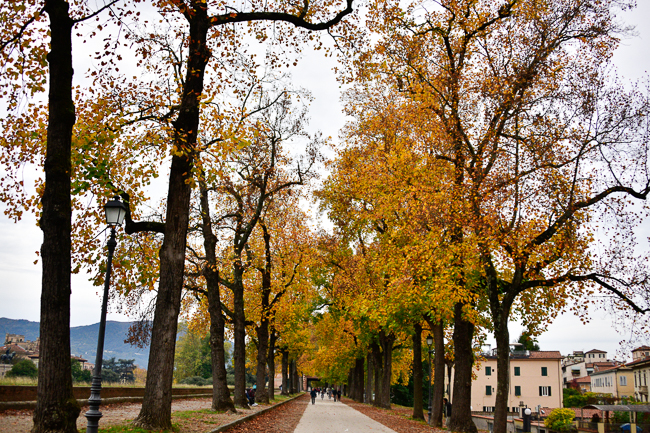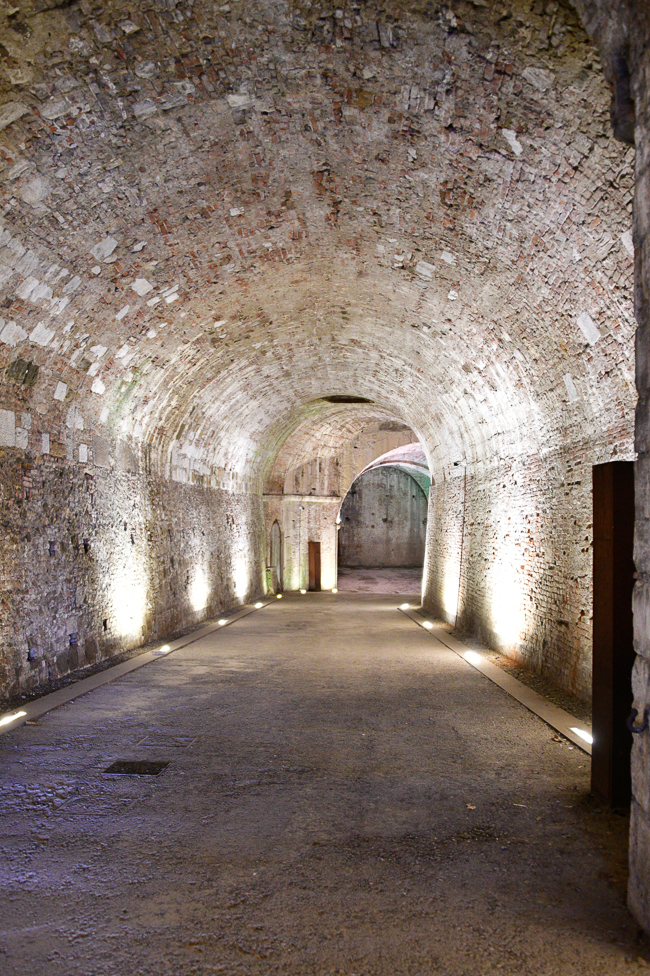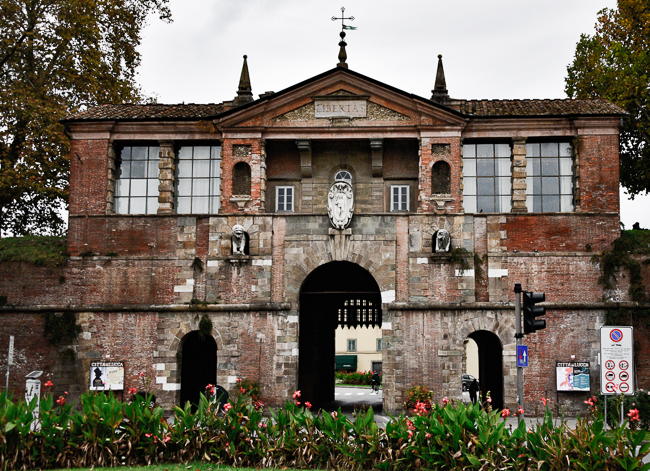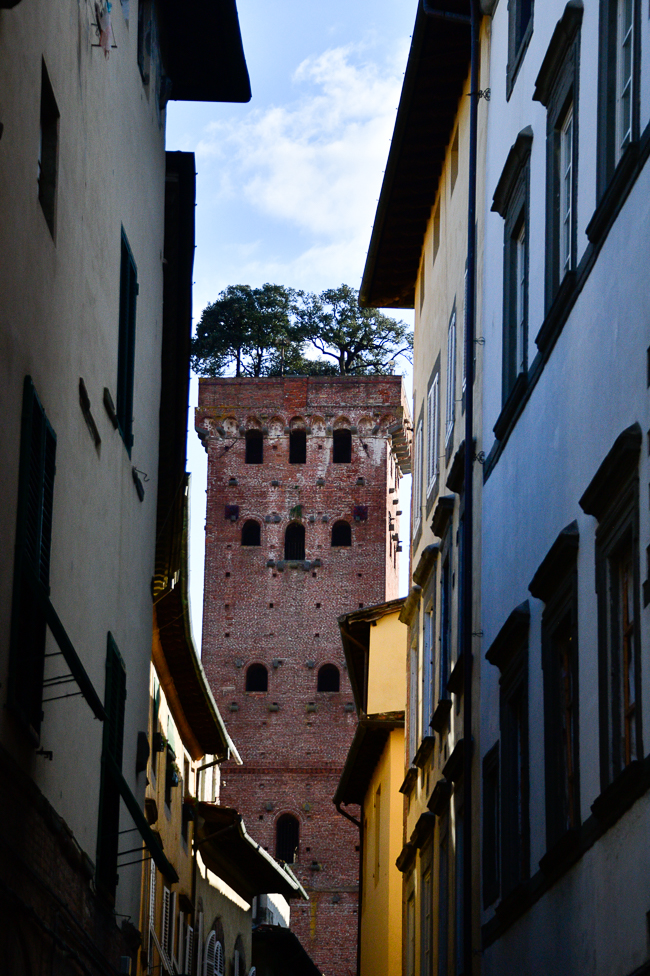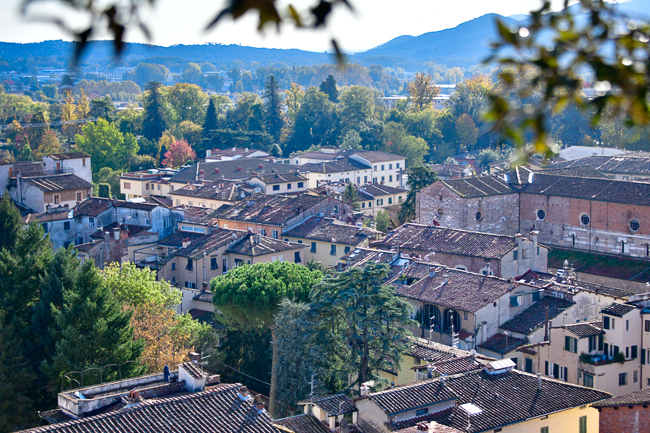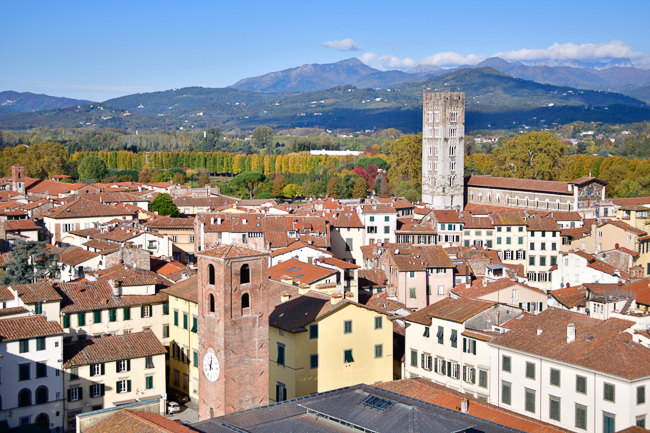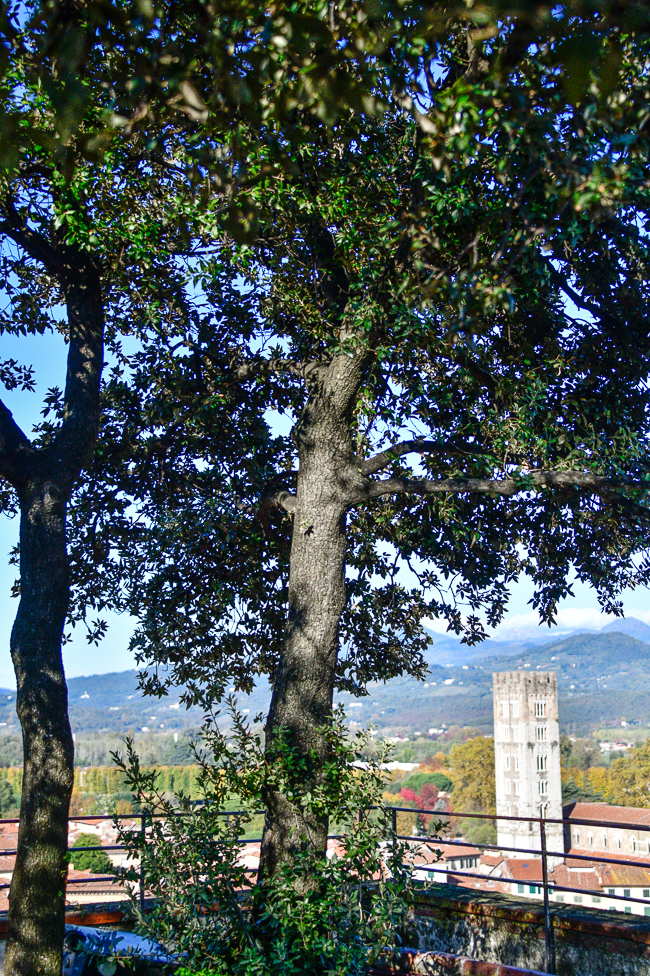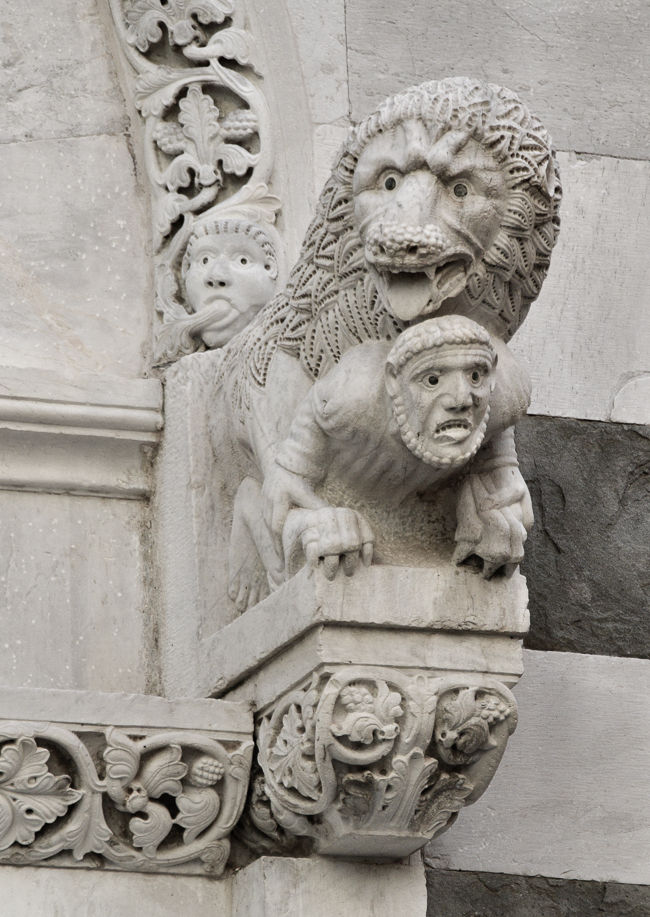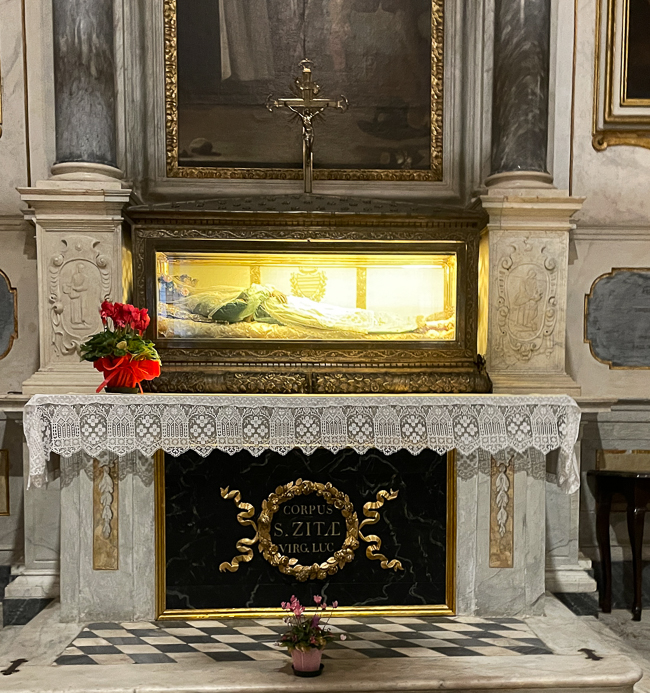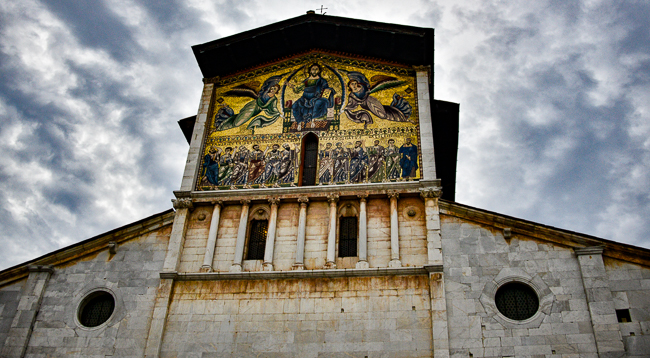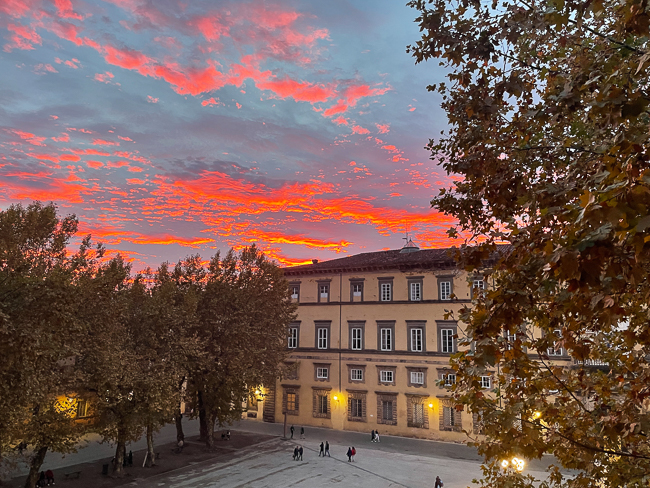November 2022
The walls of Lucca (Mura di Lucca) are a series of stone, brick, and earthwork fortifications that are among the best-preserved Renaissance fortifications in Europe.
The construction of the current walls of Lucca, which replaced earlier medieval and Roman fortifications, began on May 7, 1504, and ended a century and a half later in 1648, with additional structural updates in the second half of the seventeenth century as better construction techniques were learned.
Architecturally, the walls are composed of twelve curtains in the embankment, interspersed with eleven bulwarks with brick ornament, forty feet high and as much as 100 feet wide in places. They run for approximately three miles.
In the 19th century, Duchess Maria Luisa of Bourbon commissioned the royal architect Lorenzo Nottolini to turn the walls into a walkway and at that time added the trees.
One of the main features of the wall is the passages and tunnels throughout the structure. For defensive purposes, Lucca could move men, cannons, munitions, and food secretly. There are cannon batteries, gun/arrow, and guard stations so no troops would be detected above.
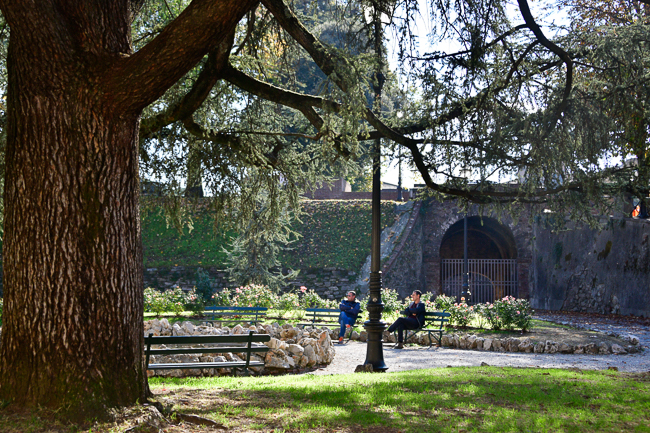
Had I remained underground and walked to the next bulwark I would have been confronted with this gate at the San Marina Bulwark
To enter the city one must pass through one of the Portas. There are three originals still used and 2 newer ones.
Torre Guinigi
There once were approximately 130 medieval towers in the city of Lucca, today the Torre Guinigi and Torre Delle Ore, are all that are left in their original state.
The tower was commissioned by the Guinigi banking family, wealthy merchants of the 14th century. Paolo Guinigi was lord of Lucca from 1400 to 1430. In building the tower he wanted to refine the family’s residence with a tree-lined tower visible from every angle and perspective, and also to show power.
A typical example of Lucchese Romanesque-Gothic architecture, the tower is built of stone and brick. But what really makes the tower unique is the garden at the top. No one knows exactly when it was created but an image in the Chronicles of Giovanni Sercambi (15th century) shows one of Lucca’s towers crowned with trees. This may not have been the only tower with trees atop. The law stipulated that no tower could be taller than the city tower, how else can one top the city tower than to do so with trees rather than bricks?
If you are willing to brave the 25 flights (230 steps) to reach the top, the views are wonderful.
Church Lions
I am sure I have noticed and photographed lions outside of churches around the world, but in Lucca, I truly began to see them.
In the 12th and 13th centuries, many church entrances featured a variety of scary beasts, often exotic or imaginary and sometimes mixed with human figures. Some scholars say they are “purely decorative,” while others argue that they serve two purposes. The first symbolizes the martyrs’ entrance into Heaven. The second are signs “that we must turn our backs on…all worldly cares and employments if we would enter into the kingdom of God.”
Sometimes in scripture, a lion represents Christ, But in other scriptures, it is interpreted that the lion represents the enemy that Christ will vanquish.
Whatever the purpose, I will probably now begin to see them in a whole new light.
Dante and Lucca
In the Divine Comedy, Dante refers to the Tuscans from Lucca, with the exception of a few characters, as a bad examples, such as flatterers, barterers, and gluttons.
He does however mention the city in a good light when discussing the miraculous Volto Santo (verse 48 of canto XXI of the Inferno, first canto of the Divine Comedy) and Santa Zita (Inferno, XXI, 37-42).
Zita served as a maid to the Fatinelli family and was appreciated by poor people for her generosity and by the family for her dedication to work.
It is said that another maid of the Fatinellis insinuated that Zita was a thief. One day Fatinelli met her on the stairs as she was on her way to a needy family, and asked her what she had in the apron that was so full she could barely hold it with her hands. Although it was full of bread, Zita was frightened and replied that it was full of flowers for the Madonna, and when she opened her apron, flowers and leaves fell from it for real.
At the moment of writing the Divine Comedy, Zita was already dead (1278), but she had not been canonized yet.
In 1580, Saint Zita’s body was exhumed and found to be incorruptible, and her body was put on display in a silver casket, as is tradition, in the Basilica di San Frediano, the church where she had prayed while alive. She was canonized in 1696.
The Basilica di San Frediano is the oldest place of worship in Lucca. It is said that Saint Fridianus, bishop of the city from 560 to 588, founded the church. It was mentioned for the first time in a document from the year 685 as a Lombard-era basilica.
The large Romanesque-style mosaic on its façade dates to the end of the 13th century and is extremely rare. In Tuscany, the only other façade decorated like this is on the Church of San Miniato al Monte in Florence.
